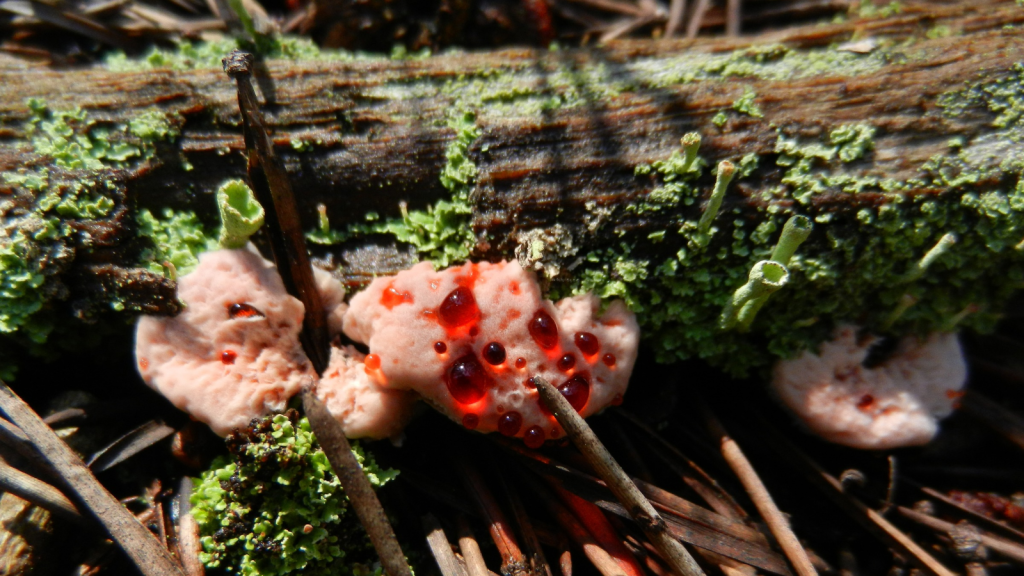Fungi are among the most bizarre and fascinating organisms on our planet. These peculiar life forms come in an astounding array of shapes, sizes, and colors. From glowing mushrooms to fungi that turn insects into zombies, the fungal kingdom is astonishing. Some of these organisms have incredible survival strategies, while others possess properties that seem almost magical. There’s so much to learn about fungi and so much that science still does not understand. Whether you’re a seasoned mushroom hunter or just curious about the weirder side of nature, these 16 freakish fungi are sure to amaze and delight you.
The Zombie-Maker Fungus
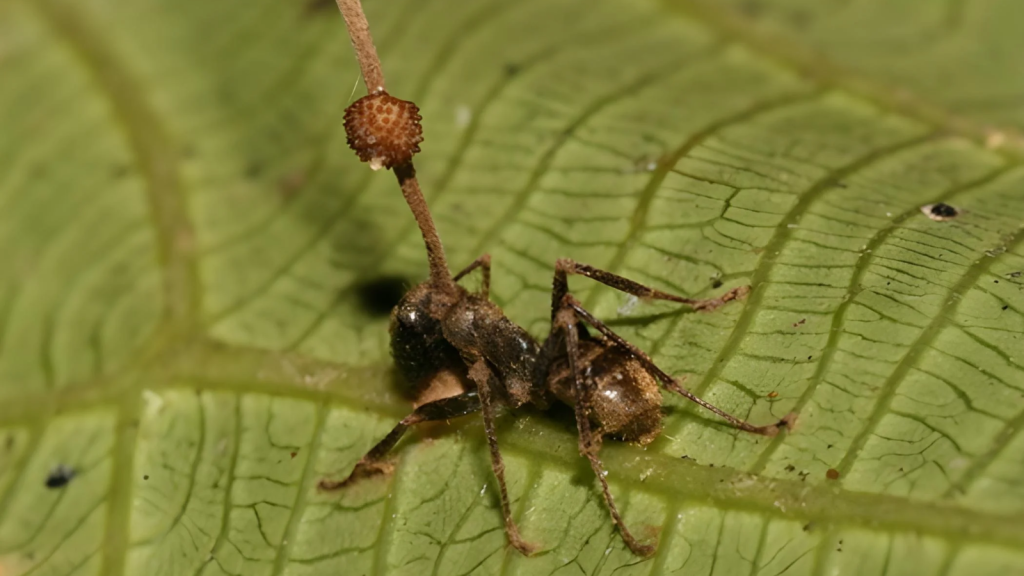
Ophiocordyceps unilateralis, also known as the zombie-ant fungus, infects ants and controls their behavior. It forces infected ants to climb to the top of plants and clamp their jaws onto leaves. The fungus then kills the ant and grows a stalk out of its head to spread spores. This bizarre process ensures the fungus can infect more ants and continue its life cycle. Remarkably, each species of Ophiocordyceps typically targets only one species of ant, showing a high degree of host specificity.
The Glowing Ghost Fungus
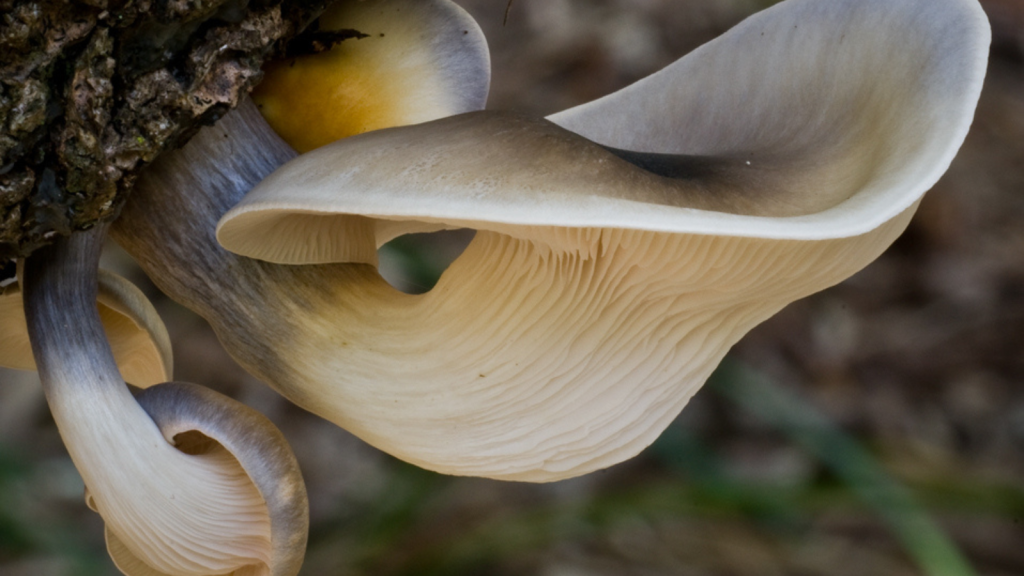
The ghost fungus, Omphalotus nidiformis, is a bioluminescent mushroom that glows in the dark. Found in Australia and parts of Asia, it emits an eerie greenish light from its gills. Scientists think this glow might attract insects to help spread the fungus’s spores. The light is so bright that people have used these mushrooms to mark trails at night. Interestingly, the ghost fungus is poisonous and can cause severe gastrointestinal distress if ingested.
The Bleeding Tooth Fungus
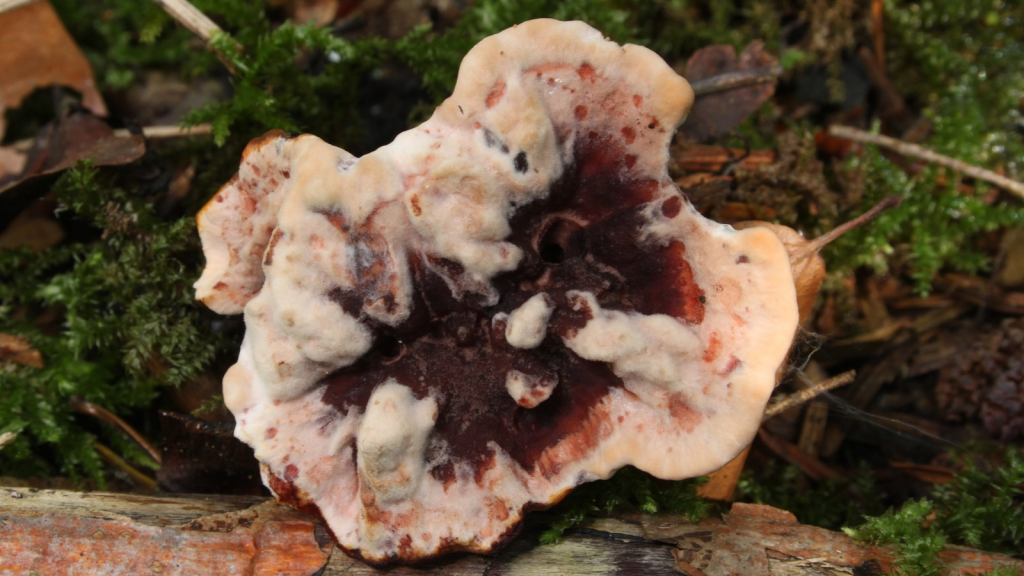
Hydnellum peckii, commonly called the bleeding tooth fungus, oozes a bright red liquid that looks like blood. Young specimens produce this red juice, which contains a pigment similar to that found in beets. While it looks alarming, the fungus is not harmful to humans. It’s found in North America and Europe, often growing in coniferous forests. The bleeding tooth fungus forms beneficial relationships with tree roots, helping them absorb nutrients from the soil.
The Devil’s Fingers Fungus
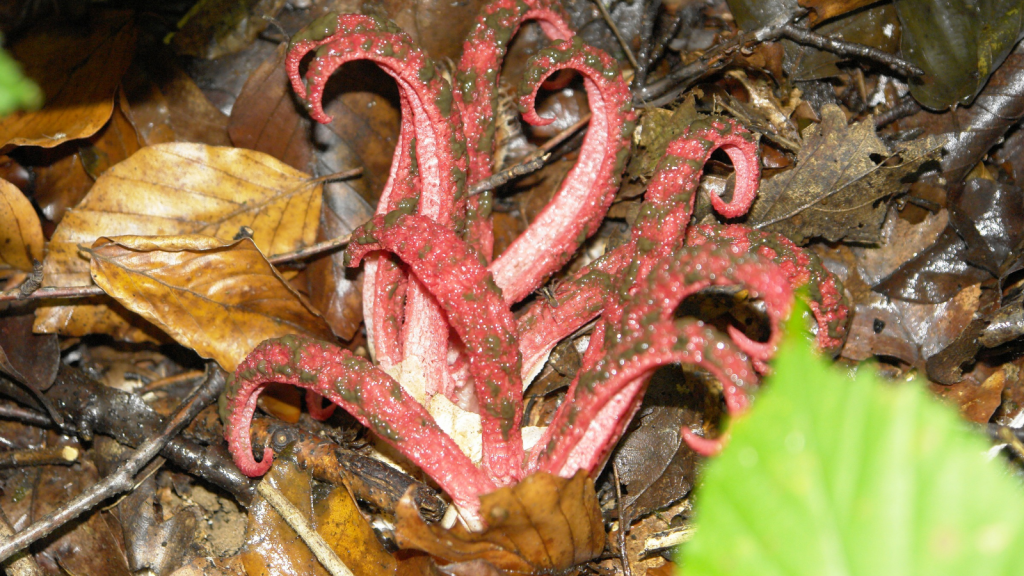
Clathrus archeri, known as devil’s fingers or octopus stinkhorn, emerges from an egg-like sac as four to eight red tentacles. These tentacles are covered in a foul-smelling slime that attracts flies and other insects. The smell is so potent that it’s been described as a mix of rotting flesh and sewage. Despite its appearance, it’s not dangerous to humans. Originally native to Australia and New Zealand, this fungus has now spread to Europe and North America.
The Electric Blue Mushroom
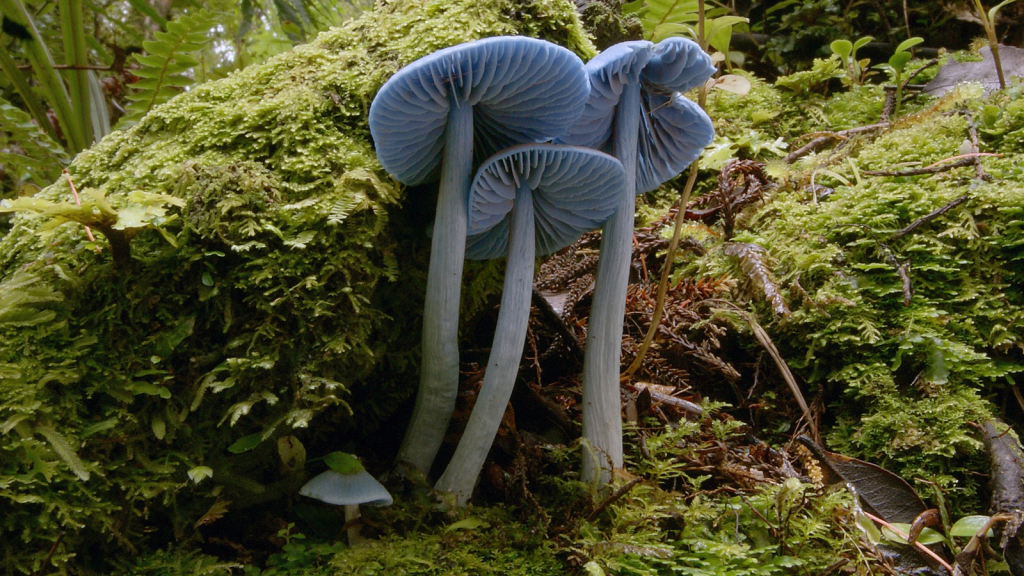
Entoloma hochstetteri, found in New Zealand and India, is a stunning bright blue mushroom. Its vibrant color comes from an unusual pigment that’s rarely found in nature. While beautiful, this mushroom is not edible and can cause stomach upset if consumed. Its striking appearance has made it a favorite subject for nature photographers. The electric blue mushroom is so iconic that it has been featured on New Zealand postage stamps.
The Latticed Stinkhorn
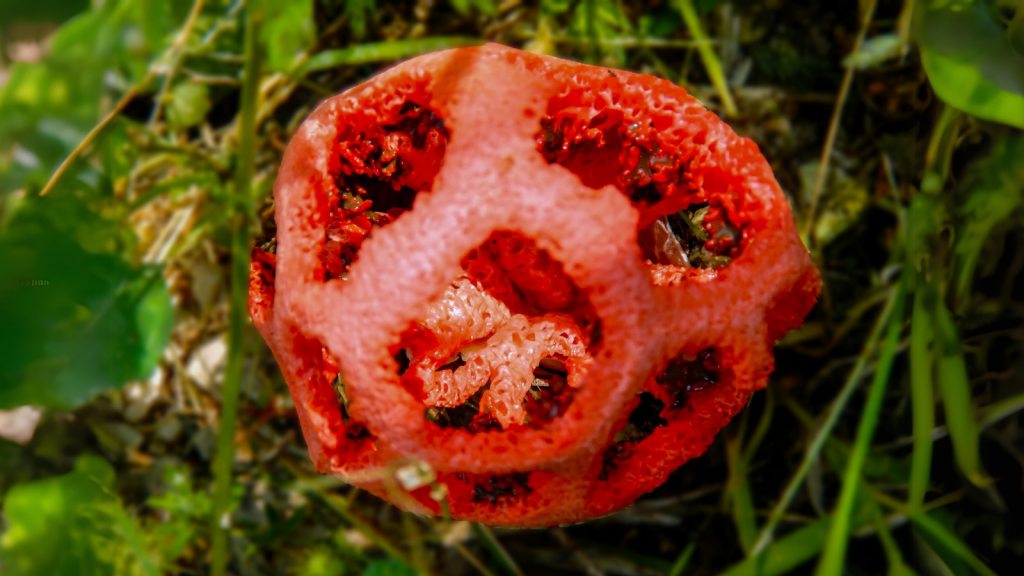
Clathrus ruber, also called the latticed stinkhorn or basket stinkhorn, looks like a red cage or lattice. It starts as an egg-like structure before bursting open into its distinctive shape. Like other stinkhorns, it produces a foul odor to attract insects. The smell has been compared to rotting meat, which helps spread its spores. Despite its unpleasant odor, the latticed stinkhorn is considered edible in its egg stage in some cultures.
The Veiled Lady Fungus
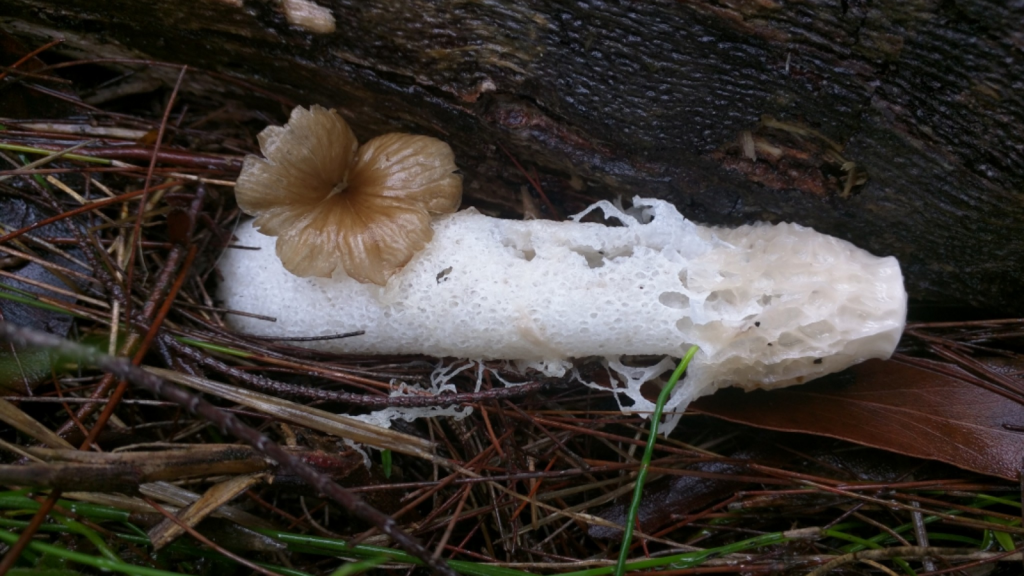
Phallus indusiatus, known as the veiled lady or bamboo fungus, has a lacy skirt-like structure hanging from its cap. This delicate veil can extend up to 25 cm long. Despite its beautiful appearance, it emits a strong, unpleasant odor to attract insects. In some parts of Asia, it’s considered a delicacy and used in traditional medicine. The veiled lady can grow incredibly fast, sometimes reaching its full size in just a few hours.
The Dog Vomit Slime Mold
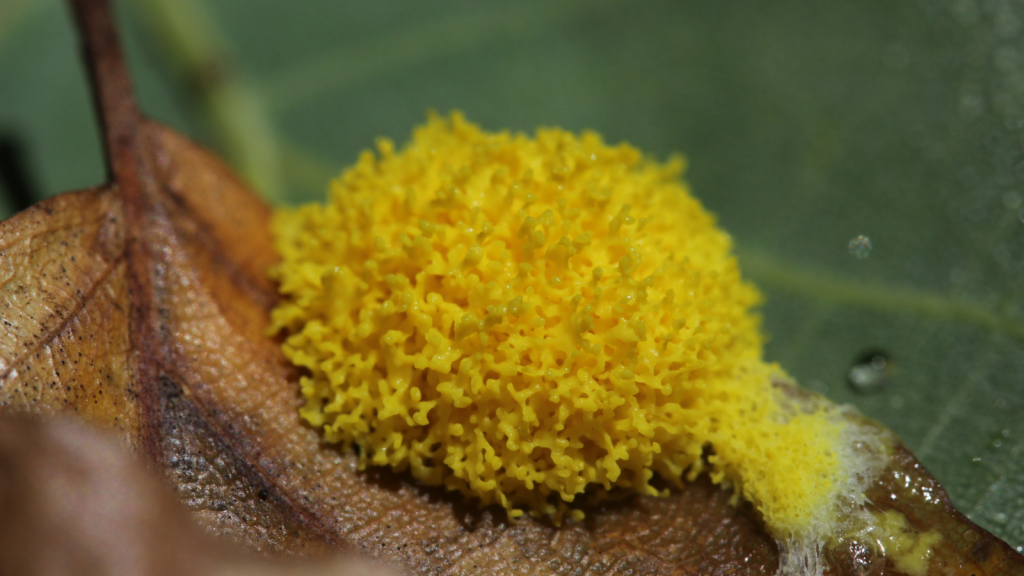
Fuligo septica, commonly called dog vomit slime mold, looks exactly like its name suggests. It’s a bright yellow, foamy mass that appears suddenly on mulch or lawns. While it’s classified as a slime mold rather than a true fungus, it’s often mistaken for one. Despite its gross appearance, it’s harmless and actually beneficial for breaking down organic matter. This slime mold can move, albeit very slowly, at speeds of up to 1 cm per hour.
The Giant Puffball
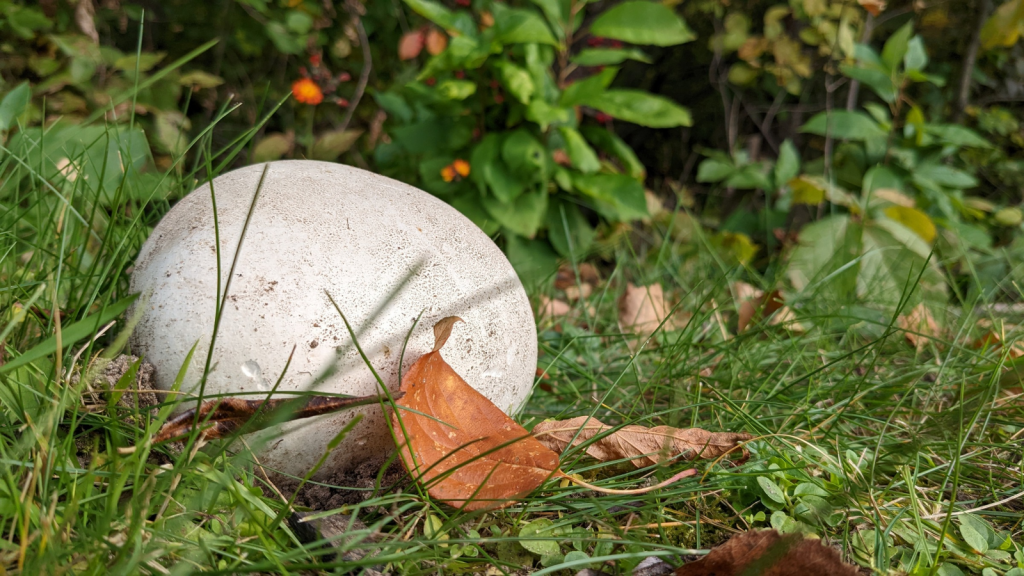
Calvatia gigantea, or the giant puffball, can grow to massive sizes – sometimes over a meter in diameter. When mature, it releases billions of spores in a puff of “smoke” when disturbed. Young giant puffballs are edible and considered a delicacy by many mushroom enthusiasts. A single giant puffball can produce up to 7 trillion spores! These mushrooms have been used medicinally to stop bleeding and as a natural bandage due to their absorbent properties.
The Cordyceps Mushroom
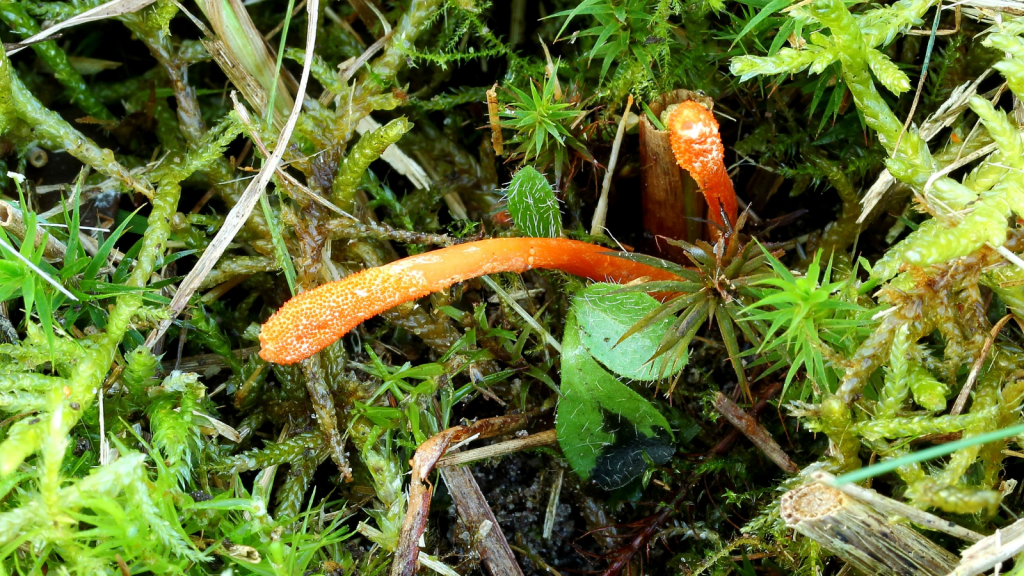
Cordyceps militaris is a parasitic fungus that infects insect larvae. It grows inside the insect, eventually killing it and producing a bright orange, club-shaped fruiting body. While gruesome for the insect, Cordyceps is prized in traditional Chinese medicine for its supposed health benefits. It’s now widely cultivated for use in supplements. Recent research suggests that Cordyceps may have potential anti-cancer properties, though more studies are needed.
The Lion’s Mane Mushroom
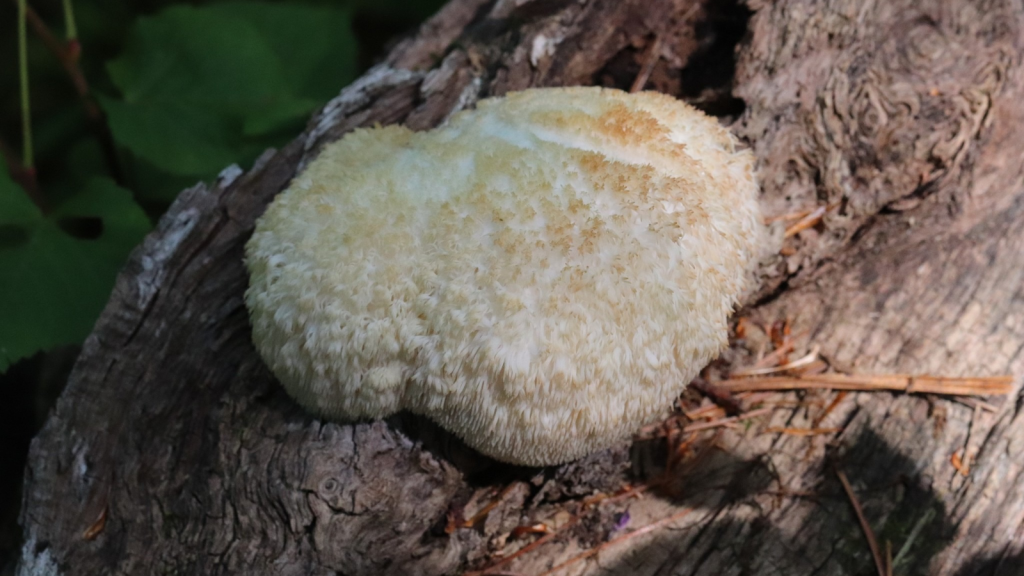
Hericium erinaceus, known as lion’s mane mushroom, looks like a white, shaggy pom-pom. Its long, cascading spines give it a unique appearance unlike any other mushroom. Lion’s mane is edible and has a taste similar to lobster or crab meat. It’s also being studied for potential cognitive benefits and nerve-regenerating properties. In traditional Chinese medicine, lion’s mane has been used for centuries to support overall health and longevity.
The Octopus Mushroom
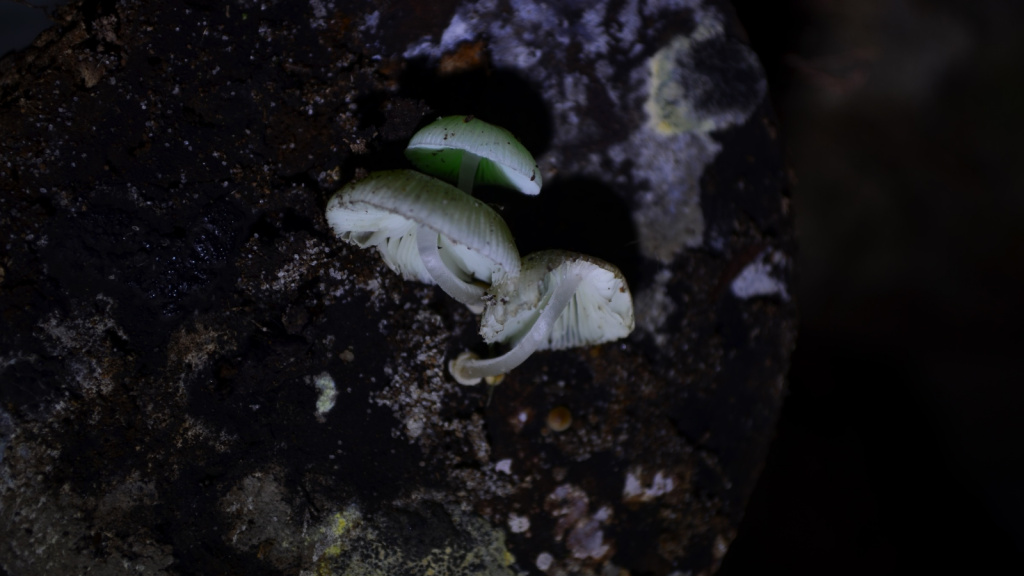
Mycena chlorophos is a small mushroom that glows bright green in the dark. Found in subtropical Asia, it’s one of the brightest bioluminescent fungi known. The light is so bright that people can read by it in complete darkness. Scientists believe the glow attracts insects to help spread the mushroom’s spores. Interestingly, the mushroom only glows for a few days when it’s young and fresh.
The Dung Cannon Fungus
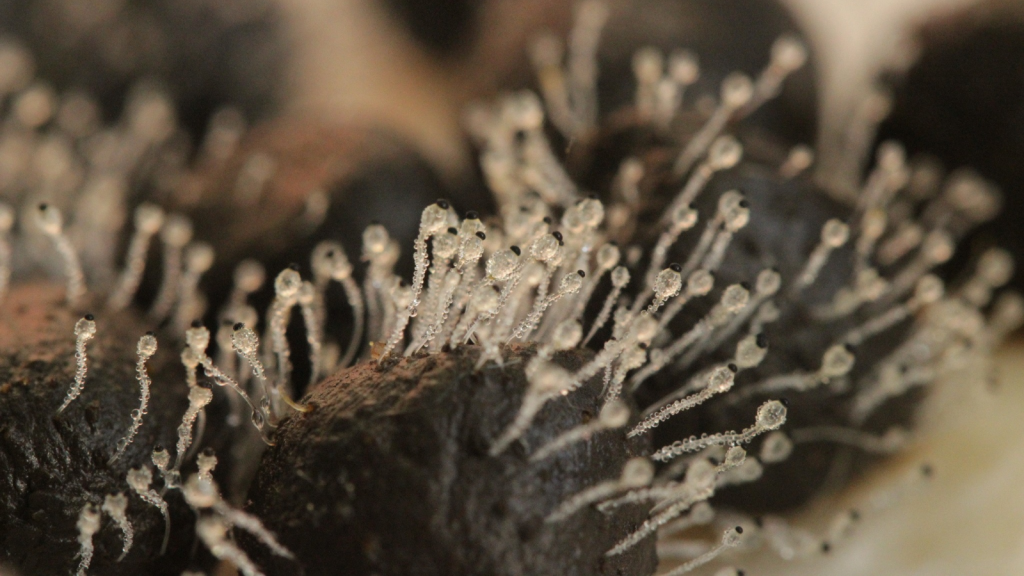
Pilobolus crystallinus, also called the dung cannon or hat thrower fungus, grows on animal dung. It has a unique method of dispersing its spores – it shoots them up to 2 meters away at speeds of up to 25 km/h! This impressive feat makes it one of the fastest accelerating organisms on the planet. The fungus can sense light and aims its spores towards bright areas, increasing the chances of them landing on fresh grass where they can be eaten by herbivores and continue their life cycle.
The Earth Star Fungus
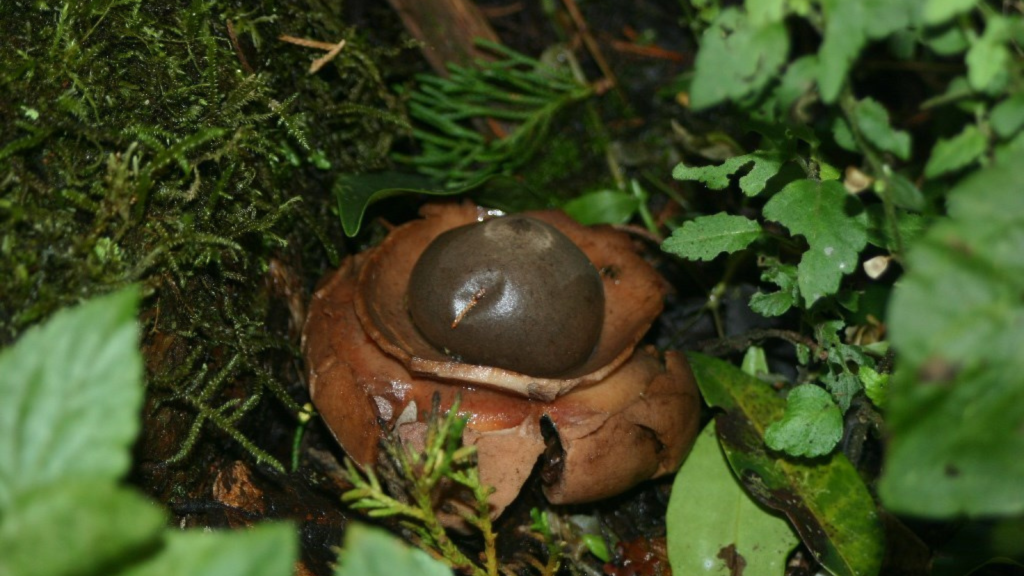
Geastrum triplex, or the collared earthstar, looks like a star-shaped puffball. When mature, its outer layer splits into ray-like sections, revealing a central spore sac. When raindrops or animals touch the sac, it releases a puff of spores. This clever design helps the fungus spread its spores over a wider area. Some species of earthstar can close up in dry conditions and reopen when it’s wet, allowing them to conserve and protect their spores.
The Dead Man’s Fingers
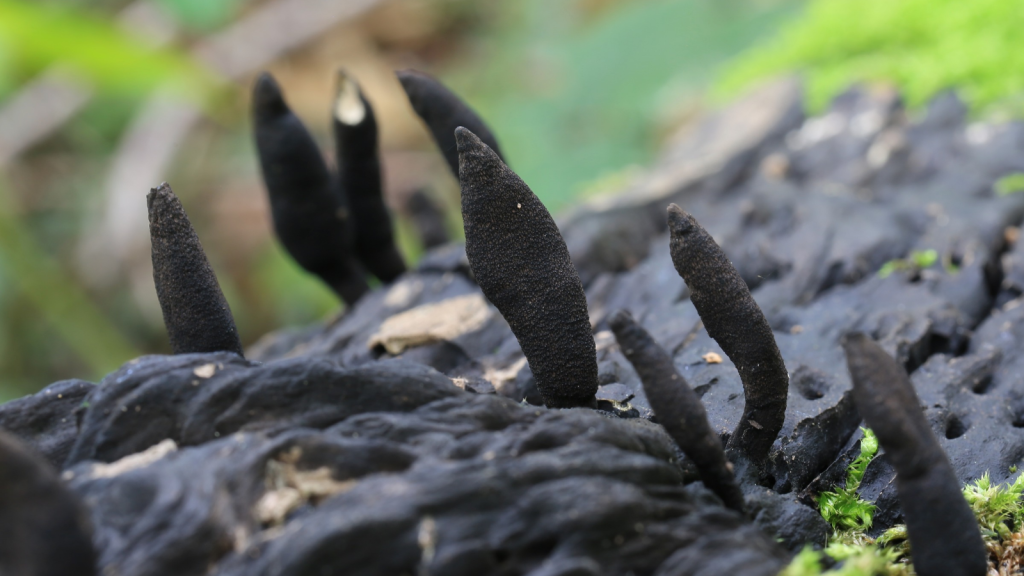
Xylaria polymorpha, commonly known as dead man’s fingers, grows in clusters that resemble human fingers poking up from the ground. It’s usually found on decaying wood or tree stumps. While it might look creepy, it plays an important role in breaking down dead plant material. The fungus changes appearance dramatically as it ages, starting black and becoming grey or blue-grey. Dead man’s fingers contain compounds that have shown potential antimicrobial properties in laboratory studies.
The Amethyst Deceiver
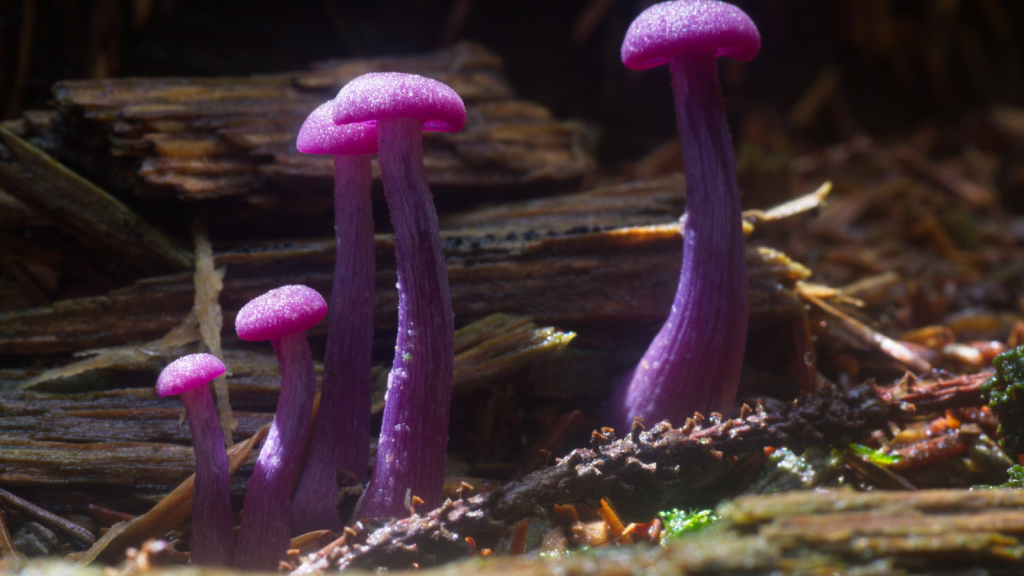
Laccaria amethystina, or the amethyst deceiver, is a small mushroom with a striking purple color. Its name comes from its tendency to fade and become difficult to identify as it ages. Despite its small size, it plays a crucial role in forest ecosystems by forming symbiotic relationships with tree roots. It’s also edible, though its small size makes it impractical as a food source. The amethyst deceiver’s vibrant color comes from a pigment called laccaric acid, which is unique to this genus of fungi.

